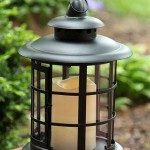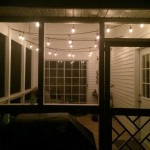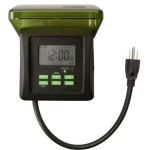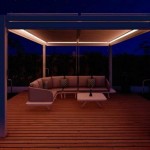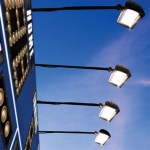Running Cable for Outdoor Lighting: A Comprehensive Guide
Outdoor lighting enhances curb appeal, safety, and functionality around a home. Whether it's illuminating walkways, highlighting landscaping, or creating a welcoming ambiance, running cable for outdoor lighting is an essential step in the process. This guide provides a comprehensive overview of best practices and considerations for successfully running cable for outdoor lighting, ensuring both functionality and safety.
Understanding Cable Types and Specifications
Choosing the right cable type and specifications is crucial for reliable and safe outdoor lighting. Here's a breakdown of common options:
- Direct Burial Cable (DBC): Designed for direct contact with soil, DBC offers superior protection against moisture and damage. Look for cables with a UV-resistant jacket for extended lifespan.
- Underground Feeder Cable (UF): Similar to DBC but with a slightly thinner insulation, UF cable is suitable for shallow burial or conduit runs.
- THHN/THWN Cable: Often used for outdoor applications, THHN/THWN cable is available in various gauges and requires conduit protection for underground installations.
- Low-Voltage Cable: Typically used for landscape lighting, low-voltage cable requires a transformer and offers flexibility and ease of installation.
Consider the following specifications when choosing cable:
- Gauge: Lighter gauge cables (like 14 AWG or 12 AWG) are suitable for most low-voltage lighting systems, while thicker gauges (like 10 AWG or 8 AWG) are recommended for higher-wattage fixtures or longer runs.
- Voltage: Choose a cable compatible with the voltage of your lighting system (12V for low voltage, 120V for standard outdoor fixtures).
- Amperage: Determine the total amperage needed for all fixtures to ensure adequate capacity.
Installation Techniques for Outdoor Lighting Cable
Running cable for outdoor lighting involves different techniques depending on the chosen cable type and location. Here's a breakdown of common methods:
Direct Burial
Directly burying cable requires using DBC or UF cable. Follow these steps:
- Mark the Route: Determine the path for the cable, avoiding obstacles and areas with potential damage.
- Dig the Trench: Excavate a trench at least 18 inches deep, with a wider base than the top. The depth ensures protection from frost heave and mechanical damage.
- Lay the Cable: Gently place the cable in the trench, ensuring it's free from kinks or sharp bends.
- Backfill the Trench: Cover the cable with sand or gravel to prevent soil compaction and damage. Then, fill the trench with soil.
Conduit Installation
Conduit installation offers greater protection and flexibility for outdoor lighting cable. Follow these steps:
- Choose Conduit: PVC conduit is a common choice for outdoor applications due to its durability and resistance to moisture.
- Install Conduit: Bury the conduit using the same direct burial techniques mentioned earlier.
- Pull Cable through Conduit: Use a cable puller to gently thread the cable through the conduit, ensuring it moves freely without snags.
Overhead Installation
Overhead installation is suitable for running cable between structures or along fences. Follow these steps:
- Secure Cable: Install cable clamps or staples along the path, ensuring they are securely attached and spaced appropriately.
- Protect Cable: Use cable ties to bundle the cable and prevent it from sagging or swinging.
- Weatherproofing: Utilize weatherproof connectors and sealing tape to prevent moisture intrusion at connection points.
Safety Considerations for Outdoor Lighting Cable
Safety is paramount when running cable for outdoor lighting. Here are critical considerations:
- GFCI Protection: Install a ground fault circuit interrupter (GFCI) in the circuit to protect against electrical shock.
- Proper Grounding: Ground all metal fixtures and components to prevent electrical hazards.
- Code Compliance: Ensure the installation adheres to local electrical codes for outdoor lighting.
- Avoid Overloading: Calculate the total wattage of all fixtures and ensure the circuit has sufficient capacity.
- Professional Installation: For complex installations or if you are unsure about any aspect of the project, always consult with a licensed electrician.

Outdoor Low Voltage Lighting Diy Family Handyman

Using A Cable To Hang String Lights Concord Carpenter
How To Hang Outdoor String Lights Resource Article By Partylights Com

The Easiest Way To Install Low Voltage Landscape Lighting Abby Organizes
How To Hang Outdoor String Lights Resource Article By Partylights Com

How To Install Landscape Lighting The Home Depot

Using A Cable To Hang String Lights Concord Carpenter

The Easiest Way To Install Low Voltage Landscape Lighting Abby Organizes

How To Install Outdoor Lighting 14 Steps With Pictures

Landscape Lights Not Working Solutions To 7 Common Problems
Related Posts

